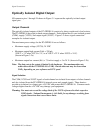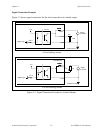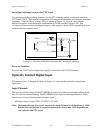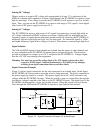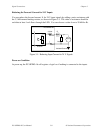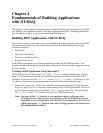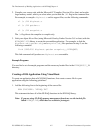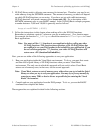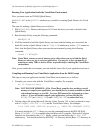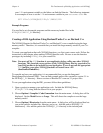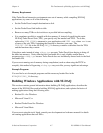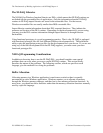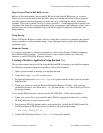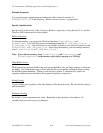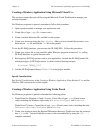The Fundamentals of Building Applications with NI-DAQChapter 4
PC-OPDIO-16 User Manual 4-4 © National Instruments Corporation
Running Your Application Inside the Visual Basic Environment
First, you must create an NI-DAQ Quick library.
MAKEQLB.BAT in the QLBUTIL subdirectory is useful for creating Quick libraries for Visual
Basic.
The steps for making a Quick library are as follows:
1. Edit NIDAQ.BAS. Remove the keyword REM from functions you want to include in the
Quick library.
2. Run this batch file by using the following command:
MAKEQLB VB
3. If all files needed to build the Quick library are found, and the linking was successful, the
batch file creates a Quick library in the NI-DAQ LIB subdirectory with a .QLB extension.
Next, load the Quick library when you enter the environment by using the following
command:
vbdos /l NIDAQVB
Note: Visual Basic returns an out-of-memory error either when you try to load the Quick
library or when you try to run your application. You may try to free up memory by
removing as many TSRs or device drivers as possible before entering the Visual Basic
environment.
After you are inside the environment, you can load the source file of your application and run it.
Compiling and Running Your Visual Basic Application from the DOS Prompt
The steps to run your application outside Visual Basic environment are as follows:
1. Compile your source code with the Visual Basic compiler. For example:
bc /O diginout.bas;
Note: NOT ENOUGH MEMORY—If the Visual Basic compiler does not have enough
memory to compile your application, you should first try to make available as much
conventional memory as possible. See your DOS manual for information on how
to do so. If you still cannot compile your application, you can edit the files
NIDAQ.INC (or NIDAQR.INC) and NIDAQCNS.INC to reduce their size.
2. Link the object file (using Microsoft Overlay Linker Version 3.61 or later) produced in step 1
with NIDAQMSC.LIB, SUP71.LIB, and the Visual Basic library. For example:
link /NOE /NOD /SEG:250 diginout,,, VBDCL10E NIDAQMSC SUP71;
You must include the SUP71 library in your link command because the DOS NI-DAQ
library NIDAQMSC.LIB is compiled using the Microsoft C compiler. Microsoft C support
functions are contained in the SUP71 library, which you can find in the NI-DAQ LIB
subdirectory. You should include the NI-DAQ LIB directory and the Basic LIB directory in



